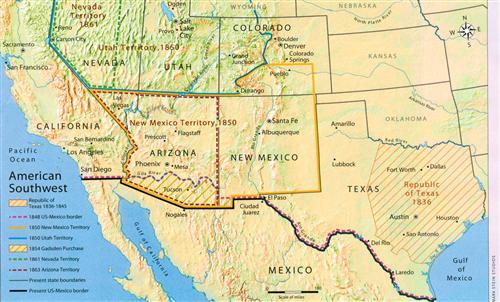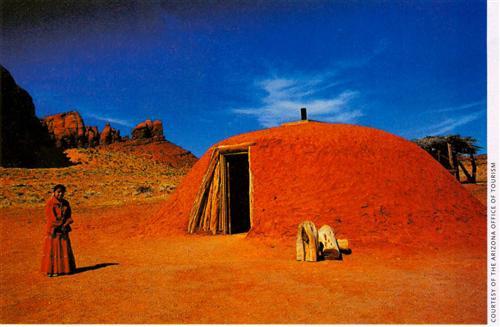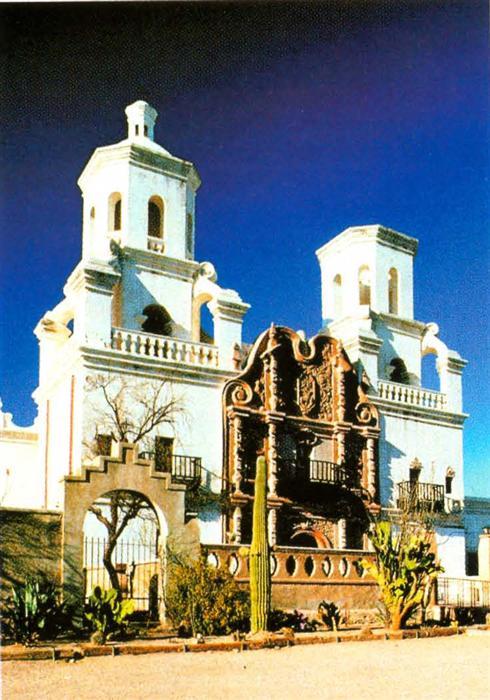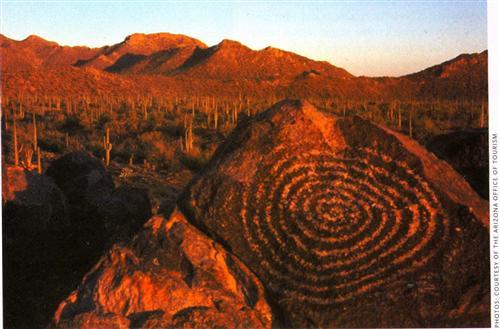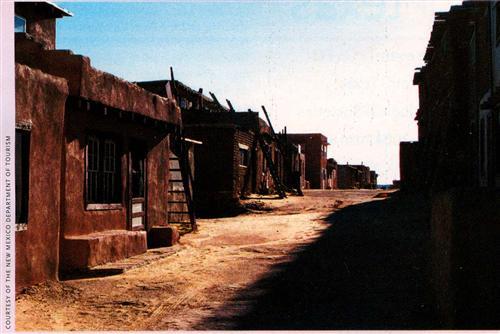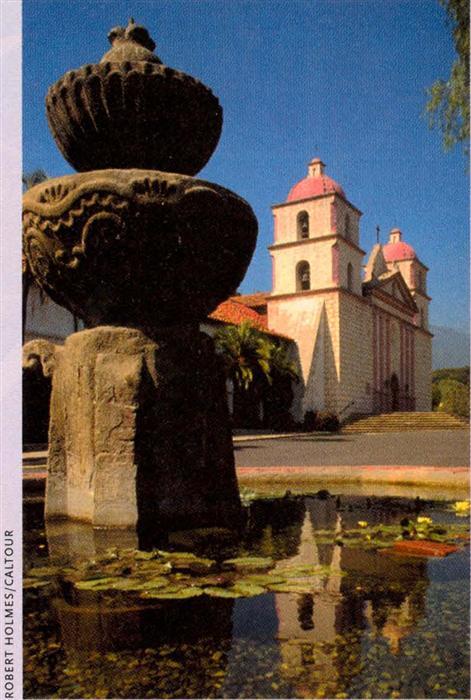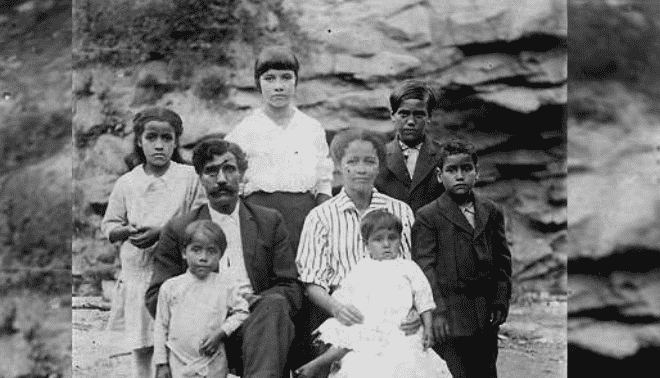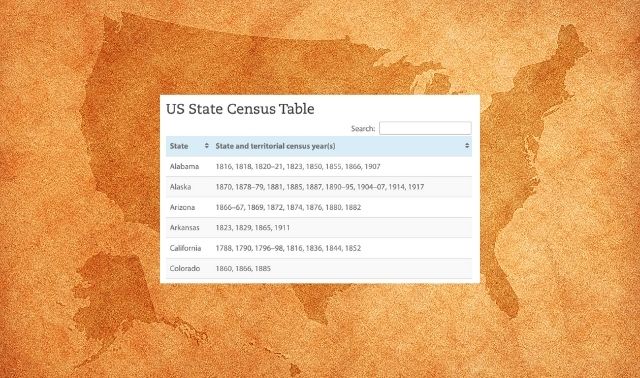Sign up for the Family Tree Newsletter Plus, you’ll receive our 10 Essential Genealogy Research Forms PDF as a special thank you!
Get Your Free Genealogy Forms
"*" indicates required fields
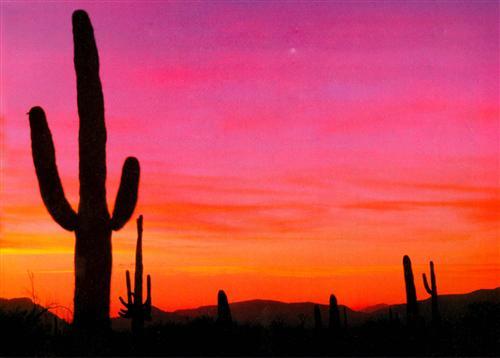
Bordered up
To know where to look for Southwestern ancestors, you’ll need a little history. Boundaries in this wide-open country shifted like the desert dunes: Parts of Nevada, for example, once belonged to Arizona, Utah and New Mexico. Western Texas has flown the flags of Spain, Mexico, the Republic of Texas and the Confederate States.
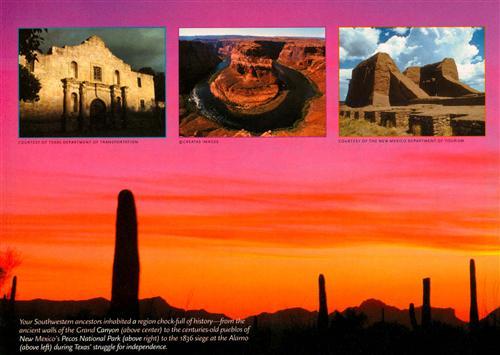 Mexican dominion over the Southwest began to crumble with Texas’ declaration of independence in 1836, then it collapsed after the Mexican-American War. In 1848, the Treaty of Guadalupe Hidalgo ended the war and fixed the US-Mexico boundary at the Rio Grande, the Gila River and the Colorado River. For $15 million, Mexico ceded almost half of its territory, including most of today’s New Mexico, Arizona, Colorado, Utah and Nevada, plus California. The 1853 Gadsden Purchase added the rest of southern Arizona and southwestern New Mexico.
Mexican dominion over the Southwest began to crumble with Texas’ declaration of independence in 1836, then it collapsed after the Mexican-American War. In 1848, the Treaty of Guadalupe Hidalgo ended the war and fixed the US-Mexico boundary at the Rio Grande, the Gila River and the Colorado River. For $15 million, Mexico ceded almost half of its territory, including most of today’s New Mexico, Arizona, Colorado, Utah and Nevada, plus California. The 1853 Gadsden Purchase added the rest of southern Arizona and southwestern New Mexico.Brigham Young, who’d arrived in Utah in 1847, had his own ideas for the new territory — and then some. He and his Mormon faithful dreamed of a state of Deseret that would span Utah, parts of Idaho and Wyoming, and a swath from northern New Mexico and Arizona west to Carson City, Nev., and San Bernardino, Calif.
But the Compromise of 1850 nixed that idea, dividing most of the United States’ vast southwestern holdings between the New Mexico Territory, which covered today’s New Mexico, Arizona, part of Colorado and the southern tip of Nevada, and a more modest Utah Territory. Besides present-day Utah, it encompassed the rest of Nevada, the western third of Colorado and a corner of Wyoming.
The lure of silver quickly changed that map. The 1859 discovery of the Comstock Lode in Nevada turned that section of the Southwest into a series of boomtowns, attracting adventurers of all stripes, including Mark Twain. Nevada became a separate territory in 1861 and a state in 1864, long before its neighbors. Arizona, which spun off into its own territory in 1863, gave up what had been Pah- Ute County to Nevada in 1866.
The spread-out Southwest states may surprise you with how few counties they contain. Daniela Moneta, genealogy librarian for the Arizona State Library, Archives and Public Records, notes of her state, “Geographically, it is quite large and there are only 15 counties. Several Rhode Islands would fit into one of its counties. This makes travel from one county to the next very time-consuming, especially if you want to visit the historical societies and the county courthouses.”
Popular history
If your Southwestern roots predate US governance, look for Spanish and Mexican colonial censuses from 1750 to 1830 at the New Mexico Records Center and Archives <www.nmcpr.state.nm.us>, and in a collection published by the New Mexico Genealogical Society <www.nmgs.org>. Other important holdings from this era, such as the 1831 census of Santa Cruz County, Ariz., are at Arizona’s state archives in Phoenix and the Arizona Historical Society in Tucson. (For more on tracing your Hispanic ancestors, see the October 2002 Family Tree Magazine and our Hispanic Ethnic Toolkit <www.familytreemagazine.com/ethnic_cat.asp?ethnicity=Hispanic>.)
You may find 19th-century ancestors in territorial censuses. Available at the National Archives and Records Administration in Washington, DC <www.archives.gov> plus various regional repositories, these early enumerations often can be borrowed on microfilm from your local Family History Center (FHC), a branch of the Church of Jesus Christ of Latter-day Saints’ Family History Library (FHL) in Salt Lake City <www.familysearch.org>. The FHL’s collection even includes 1826 and 1830 pre-independence censuses for Texas and an 1840 census for the Republic of Texas.
Most territorial and early-statehood censuses also can be searched online. The subscription site Ancestry.com <Ancestry.com >, for example, offers the 1864 Arizona census and various other censuses from 1831 to 1880; territorial and federal censuses for New Mexico (1850 to 1870); various Utah censuses from 1850 until statehood in 1896; Nevada censuses for 1860 and 1870 and the 1875 state census; Colorado censuses until statehood in 1876, plus an 1885 state census.
The regular US federal census covered the New Mexico and Utah territories plus Texas beginning in 1850, and the Arizona and Colorado territories plus Nevada starting in 1870. All of these records are part of Ancestry.com’s census subscription and Genealogy.com’s US Census Collection. A few of these censuses also have been transcribed (or even scanned) by volunteers at USGenWeb, where you can view them for free at <www.us-census.org/inventory>. Nevada census researchers are unusually fortunate: The Nevada State Historic Preservation Office has put the state’s entire 1860,1870,1880,1900,1910 and 1920 censuses — 310,000 entries — online at <dmla.clan.lib.nv.us/docs/shpo/nvcensus>. Nevada’s the first state to undertake such an endeavor.
A search for your Southwest roots may lead you to American Indian records. Many members of the Navajo tribe — now the region’s largest — still live in hogans in remote areas of Arizona’s Monument Valley.
Because of boundary changes and other historical twists, you’ll come across census peculiarities that may put your ancestors someplace other than where you think they should be. For example, the Nevada counties of Carson, Humboldt and St. Mary’s were enumerated with the Utah Territory in 1860. There also was a partial territorial census for Nevada in 1862 and 1863. In New Mexico, the 1860 US census covered only the area south of the Gila River. Note that the US government administered an 1885 state census in New Mexico that listed all household members; it’s available on microfilm through the FHL.
Much as in other frontier states, shifting county lines can trip you up. “Always check the history and formation of a county when you are looking for an ancestor,” advises Patricia A. Hall Scott, a Nevada historian and records transcriber. “He may live in the same spot, but it will [have] a different county name.” In Arizona, for example, the original 1864 territory was divvied up into just four counties: Yavapai, Mohave, Yuma and Pima.
San Xavier del Bac, built in 1797, is still in use.
Vital signs
Despite the Southwest’s long history, the area’s relatively recent addition to the American family means a shortfall in some records, such as those of births, marriages and deaths. Arizona didn’t begin statewide recording of births and deaths until 1909; records prior to that date — and all marriage records — were kept by the county clerk of the superior court office. But Arizona has leapt to the head of the class with a state-of-the-art Web site <genealogy.az.gov> that lets you search for birth certificates (1887 to 1928) and death certificates (1878 to 1953) — then view images of them in PDF format. Utah started statewide marriage records in 1887 and birth and death records in 1905; Colorado began in 1907; New Mexico didn’t begin statewide vital records until 1920; Texas has kept statewide birth and death records since 1903, but marriage records only since 1966!
Nevada is a bit of a special case, with birth and death records since 1911, but marriages not until 1968. Some Nevada counties have birth and death records dating from 1887 in their county recorder’s office, though. “Nevada is one of the tough states to research in,” warns Scott. “Death records are not open to the public, though obituary files are now being placed online to assist researchers.” See the Nevada Obituary Project at <www.rootsweb.com/~usgenweb/obits/obitsnv.htm>.
Kachina dolls represent spirits central to Hopi beliefs.
With the transient nature of mining work and out-of-the-way desert locales, Scott adds, your Nevada ancestor’s final resting place may be equally tricky to find. Volunteers also are working to put data on “lost” Nevada cemeteries online, she says. Extant cemetery records from almost every county can be accessed on microfilm from the FHL. And Nevada researchers shouldn’t miss Richard B. Taylor’s The Nevada Tombstone Record Book: Southern Nevada (Bee Hive Press).
Researchers in heavily Hispanic states may find answers to vital-records puzzles in Catholic church records. For New Mexico and southern Colorado, Karen Daniel, editor of New Mexico Genealogist, recommends the guide “Locating Catholic Church Records in New Mexico” on the New Mexico Genealogical Society’s Web site <www.nmgs.org>. The early records of the Archdiocese of Santa Fe, for example, have found their way into the New Mexico State Records Center and Archives. Many early Catholic records also have been microfilmed by the FHL. (See the February 2004 Family Tree Magazine for tips on using church records.)
This petroglyph, one of many on Signal Hill in Arizona’s Saguaro National Park, was likely carved by the Hohokam Indians 700 to 1,300 years ago.
Work study
Still stumped? The boom-and-bust, on-the-move life in the 19th-century Southwest may have contributed clues to your family history. “Miners traveled from mining boom to mining boom, each of which lasted from a few months to several decades, but most lasted only a few years,” says David A. Davis, editor of the Nevada State Genealogical Society’s newsletter. After the Comstock Lode was discovered, more than 200 mining districts established in Nevada recorded deeds and claims. You can find these records, along with mining corporation papers and state mine inspection records, at the state archives. Who cares about mine inspections? You might — if your ancestor is in the lists of mine supervisors, hoist operators or accident victims.
Don’t forget land claims. The 1862 Homestead Act covered all the Southwestern states except Texas. Nevada soon was included as a state, the others as territories. Arizona’s first federal land office opened in Prescott in 1870. Land-grant records are held by the National Archives, the Bureau of Land Management (BLM) and state archives. Western state land records before 1908 aren’t on the BLM’s General Land Office Records Web site <www.glorecords.blm.gov>. Fortunately, Texas land records, like those of the original 13 colonies, are kept by the state. Check the National Archives’ Southwest and Rocky Mountain regional facilities for mining and homestead surveys, grazing records, tract books and other land records that might have clues to your ancestors. New Mexico’s state archives also has Spanish land records dating from 1693 to 1821 and Mexican records from 1821 to 1845.
If your Southwestern ancestors were ranchers rather than miners, you may find answers in cattle-brand books. Brands had to be registered to be official, and these records include information about the registrants. Check with the state livestock board for the location of old brand books. The Arizona state archives, for example, has a collection of cattle-brand volumes; county courthouses also may hold brand books.
More southwestern sources
Your search may lead you to probate records, which generally are kept at the county level. In Arizona and Nevada, they’re at the offices of the county clerk of the superior court. New Mexico probate files may be at the district court offices or the county clerk’s office, depending on the size of the file and complexity of the estate; you can find early probate records at the state archives.
Don’t let the Southwest’s mostly rural nature lead you to overlook city directories. The FHL has microfilmed city directories for Tucson (as far back as 1881), Phoenix, Albuquerque (dating to 1883), Santa Fe, Carson City, Las Vegas, Reno, Ogden (to 1890), Provo (to 1879), Salt Lake City (to 1867), Boulder (to 1883), Colorado Springs, Denver (to 1859), Fort Collins, Greeley and Pueblo, as well as most Texas cities, including Austin (to 1857) and El Paso. Nevada also had various territorial directories, which are much like city directories, covering 1862 to 1881. You can borrow them on microfilm from the FHL.
The Pueblo of Acoma, known as Sky City, sits on a 367-foot-high rock in New Mexico. It’s considered the country’s oldest inhabited village — archaeologists estimate American Indians settled there about 1150.
You also can look in military records — after mining and ranching, military service was among the most common occupations for 19th-century Southwestern men. Fort Bliss, for example, was established in El Paso, Texas, in 1854, and it remains one of that city’s most important institutions today. And those Rough Riders that Teddy Roosevelt made famous? They enlisted from New Mexico.
Check the National Archives for military records, but you may want to look in state archives, too. New Mexico’s archives include military records from the Spanish and Mexican eras, as well as territorial files and records from the Indian wars, the Civil War (both sides) and the Spanish-American War. In Arizona, the adjutant general’s office in Phoenix keeps state military records, while records from frontier forts are at the Arizona Historical Society <www.ahs.state.az.us>.
Don’t forget that Nevada joined the Union during the Civil War; a dozen Army companies were raised here even before statehood, though they served only locally. Their records are at the National Archives. Except for Confederate Texas, the Southwest mostly supplied troops for the Union cause — but you’ll find 271 men from the Arizona Territory who fought for the South. You can search for Civil War soldiers from the Arizona, Colorado, Utah and New Mexico territories, as well as the states of Nevada and Texas, using the Civil War Soldiers and Sailors System Web site at <www.itd.nps.gov/cwss>. Almost 160,000 Texas Confederate names are now online; for more details on Confederate ancestors, consult the 16-volume Roster of Confederate Soldiers, 1861-1865 edited by Janet W. Hewett (Broadfoot Publishing Co., $450 CD-ROM), available in large libraries.
Of course, it could be that your Southwest ancestors were on the opposite side of the men in uniform. The region has a long and rich American Indian heritage, with notable tribes, including the Navajo, Apache, Hopi and Zuni. This history also is quite recent: Geronimo didn’t surrender here until 1886. You’ll find some US government records on the region’s native peoples at the National Archives regional offices in Laguna Niguel, Calif. (Apache and Navajo), in Denver (Pueblo tribes) and in Fort Worth (Arizona tribes). The Bureau of Indian Affairs in Santa Fe houses partial censuses for New Mexico’s northern pueblos from 1904. For help tracing your American Indian ancestors, see the April 2004 Family Tree Magazine.
Repository roundup
These suggestions are just for starters, of course. The Southwest is blessed with some of the best facilities for family history research anywhere in the country, places you can dig into your regional roots or search for overseas ancestors. Besides the Family History Library and various state archives, the region is home to the second-largest Family History Center outside of Salt Lake City, in Mesa, Ariz. (41 S. Hobson St., 480-964-1200, <www.mesarfhc.org>). Though it’s on the southeastern side of the state, Texas’ Clayton Library Center for Genealogical Research (5300 Caroline, Houston, 832-393-2600, <www.houstonlibrary.org/clayton>) is one of the nation’s best genealogy libraries.
You’ll also find a wealth of Internet resources for understanding and picturing the world your ancestors inhabited. Those with Texas roots can discover pretty much anything about the Lone Star State’s past using the Handbook of Texas Online <www.tsha.utexas.edu/handbook/online>. The University of Texas Library <www.lib.utexas.edu> is another essential resource. Its Digital Library includes the searchable Southwestern Historical Quarterly (full text, 1897 to 1918) and several digital photograph collections. Other notable historical-photo databases are the Northern Arizona University Image Database <www.nau.edu/cline/speccoll/imagedb.html>, with 700,000-plus images, and the Western History Photography Collection <www.photoswest.org> of 100,000 images from the Denver Public Library and Colorado Historical Society.
As you explore your Southwestern roots, you’ll see that your ancestors experienced a cultural mix unique in American history. Here in the rugged mountains and high desert, Hispanic heritage blended with ancient native peoples, miners struck it rich and went bust, and real-life cowboys and outlaws created the sagas of countless Wild West movies. It’s the land of Wyatt Earp and Georgia O’Keefe, of Cochise and Coronado — and of your family’s past.
Don’t forget to check church records: Missionaries established churches, such as this one in Santa Barbara, Calif, throughout the Southwest.
ADVERTISEMENT

